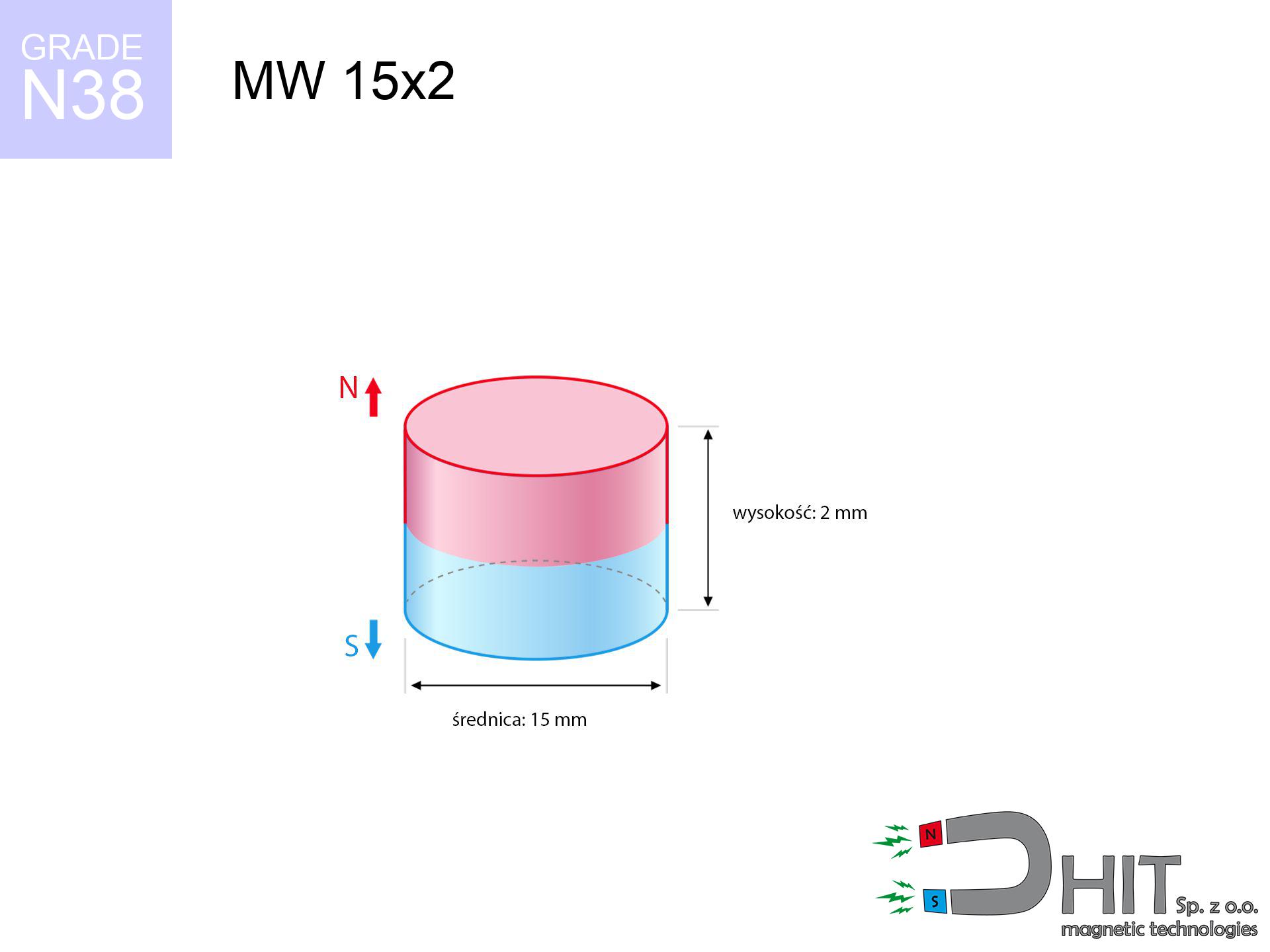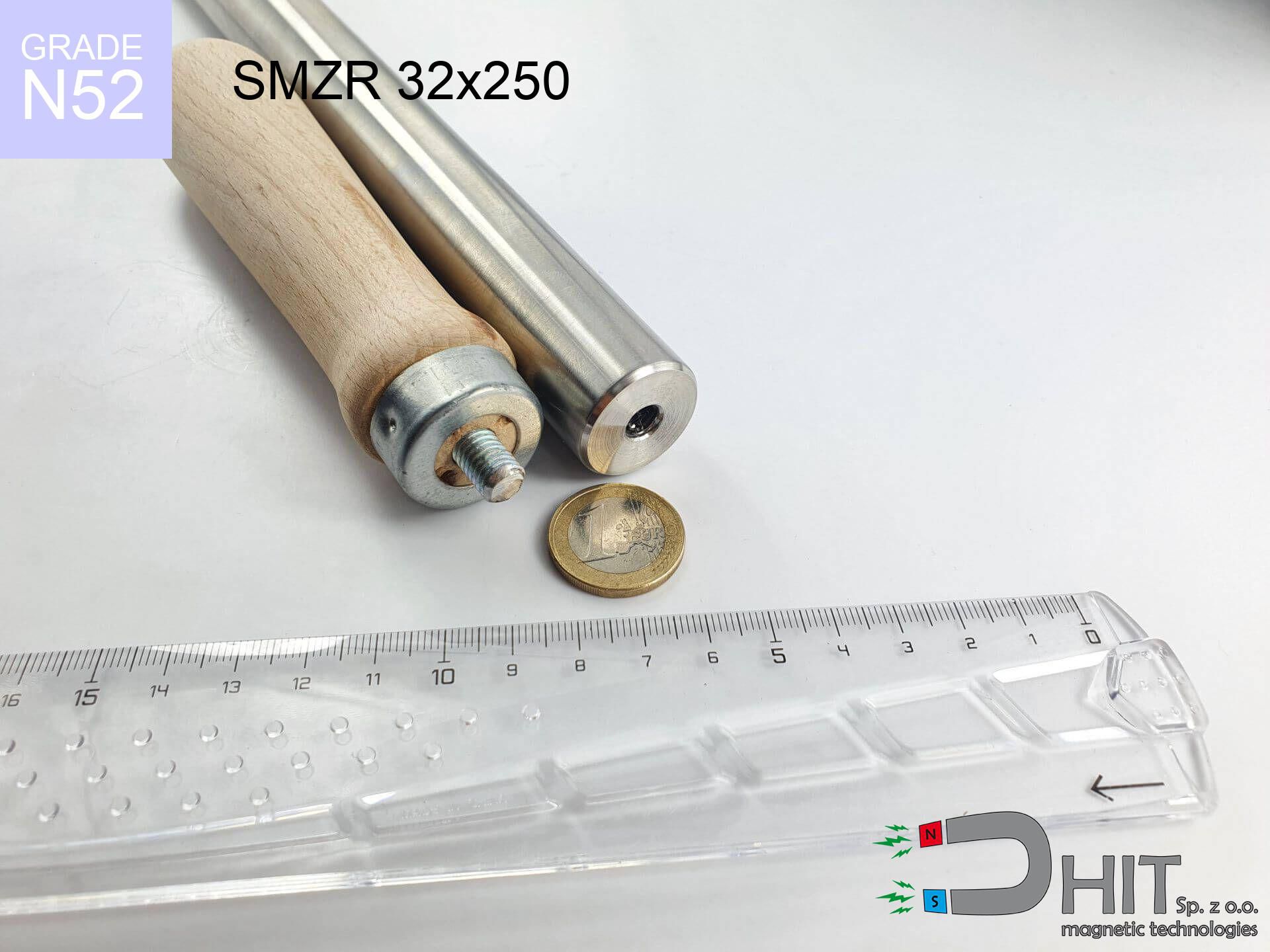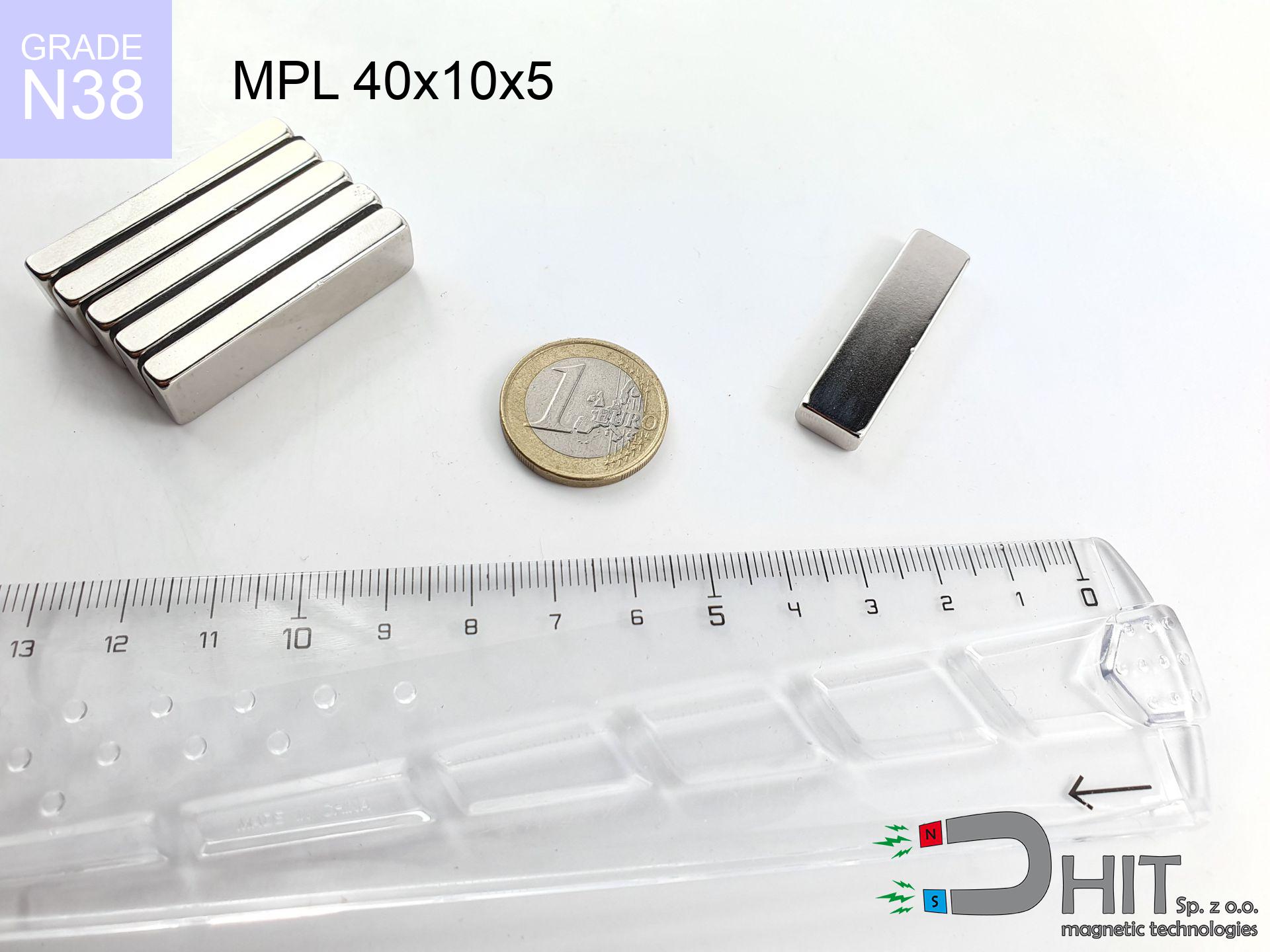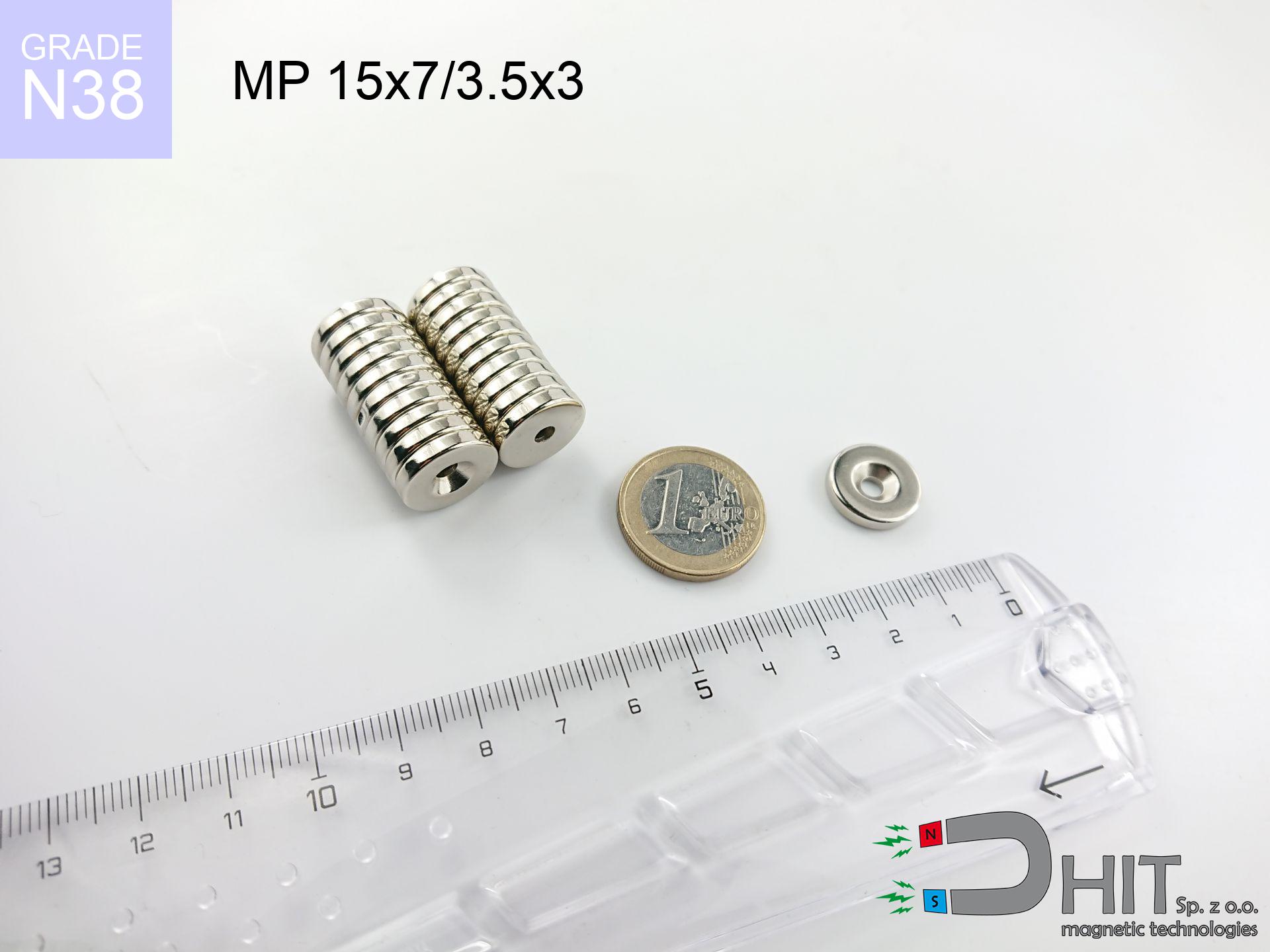MW 15x2 / N38 - cylindrical magnet
cylindrical magnet
Catalog no 010028
GTIN: 5906301810278
Diameter Ø [±0,1 mm]
15 mm
Height [±0,1 mm]
2 mm
Weight
2.65 g
Magnetization Direction
↑ axial
Load capacity
1.66 kg / 16.28 N
Magnetic Induction
159.70 mT
Coating
[NiCuNi] nickel
1.218 ZŁ with VAT / pcs + price for transport
0.990 ZŁ net + 23% VAT / pcs
bulk discounts:
Need more?Need help making a decision?
Contact us by phone
+48 888 99 98 98
otherwise send us a note via
inquiry form
through our site.
Specifications and shape of magnets can be calculated on our
magnetic mass calculator.
Same-day processing for orders placed before 14:00.
MW 15x2 / N38 - cylindrical magnet
Magnetic properties of material N38
Physical properties of NdFeB
Shopping tips
Moreover, although neodymium is a component of the strongest magnets, they are prone to corrosion in humid environments. Therefore, they are coated with a thin layer of epoxy to increase their durability. It's worth noting that NdFeB neodymium magnets are about 13% lighter than SmCo magnets and, despite their power, are brittle, which requires special caution during their handling. For this reason, any mechanical processing should be done before they are magnetized.
In terms of safety, there are many recommendations regarding the use of these magnets. It is advisable to avoid their use in acidic, basic, organic environments or where solvents are present, and also in water or oil. Additionally, they can distort data on magnetic cards and hard drives, although data deletion using a neodymium magnet is not guaranteed.
In terms of properties in different environments, neodymium magnets are sensitive to corrosion, especially in conditions of high humidity. Therefore, they are often coated with thin coatings, such as epoxy, to shield them from external factors and prolong their durability. High temperatures exceeding 130°C can cause a deterioration of their magnetic properties, although there are particular types of neodymium magnets that can withstand temperatures up to 230°C.
As for potential dangers, it is important to avoid using neodymium magnets in acidic environments, basic environments, organic or solvent environments, unless they are insulated. Additionally, their use is not recommended in water, oil, or in an environment containing hydrogen, as they may forfeit their magnetic properties.
Advantages as well as disadvantages of neodymium magnets NdFeB.
Apart from their notable holding force, neodymium magnets have these key benefits:
- Their strength remains stable, and after around ten years, it drops only by ~1% (according to research),
- They show strong resistance to demagnetization from outside magnetic sources,
- The use of a polished gold surface provides a smooth finish,
- They exhibit extremely high levels of magnetic induction near the outer area of the magnet,
- Thanks to their enhanced temperature resistance, they can operate (depending on the form) even at temperatures up to 230°C or more,
- With the option for customized forming and targeted design, these magnets can be produced in numerous shapes and sizes, greatly improving application potential,
- Significant impact in advanced technical fields – they serve a purpose in HDDs, rotating machines, clinical machines or even other advanced devices,
- Relatively small size with high magnetic force – neodymium magnets offer impressive pulling strength in tiny dimensions, which allows for use in small systems
Disadvantages of magnetic elements:
- They may fracture when subjected to a sudden impact. If the magnets are exposed to shocks, they should be placed in a metal holder. The steel housing, in the form of a holder, protects the magnet from damage and additionally increases its overall strength,
- High temperatures may significantly reduce the holding force of neodymium magnets. Typically, above 80°C, they experience permanent loss in performance (depending on shape). To prevent this, we offer heat-resistant magnets marked [AH], capable of working up to 230°C, which makes them perfect for high-temperature use,
- Magnets exposed to humidity can corrode. Therefore, for outdoor applications, we suggest waterproof types made of non-metallic composites,
- The use of a protective casing or external holder is recommended, since machining internal cuts in neodymium magnets is not feasible,
- Safety concern due to small fragments may arise, in case of ingestion, which is significant in the context of child safety. It should also be noted that tiny components from these assemblies might disrupt scanning after being swallowed,
- High unit cost – neodymium magnets are pricier than other types of magnets (e.g., ferrite), which can restrict large-scale applications
Highest magnetic holding force – what affects it?
The given strength of the magnet means the optimal strength, determined in the best circumstances, specifically:
- with the use of low-carbon steel plate serving as a magnetic yoke
- with a thickness of minimum 10 mm
- with a polished side
- with no separation
- under perpendicular detachment force
- under standard ambient temperature
Impact of factors on magnetic holding capacity in practice
In practice, the holding capacity of a magnet is affected by the following aspects, arranged from the most important to the least relevant:
- Air gap between the magnet and the plate, since even a very small distance (e.g. 0.5 mm) causes a drop in lifting force of up to 50%.
- Direction of applied force, because the maximum lifting capacity is achieved under perpendicular application. The force required to slide the magnet along the plate is usually several times lower.
- Thickness of the plate, as a plate that is too thin causes part of the magnetic flux not to be used and to remain wasted in the air.
- Material of the plate, because higher carbon content lowers holding force, while higher iron content increases it. The best choice is steel with high magnetic permeability and high saturation induction.
- Surface of the plate, because the more smooth and polished it is, the better the contact and consequently the greater the magnetic saturation.
- Operating temperature, since all permanent magnets have a negative temperature coefficient. This means that at high temperatures they are weaker, while at sub-zero temperatures they become slightly stronger.
* Holding force was measured on the plate surface of 20 mm thickness, when a perpendicular force was applied, whereas under attempts to slide the magnet the holding force is lower. In addition, even a minimal clearance {between} the magnet’s surface and the plate lowers the holding force.
Safety Precautions
The magnet is coated with nickel - be careful if you have an allergy.
Studies show a small percentage of people have allergies to certain metals, including nickel. An allergic reaction often manifests as skin redness and rash. If you have a nickel allergy, you can try wearing gloves or simply avoid direct contact with nickel-plated neodymium magnets.
Neodymium magnets should not be near people with pacemakers.
In the case of neodymium magnets, there is a strong magnetic field. As a result, it interferes with the operation of a heart pacemaker. Even if the magnetic field does not affect the device, it can damage its components or deactivate the entire device.
Never bring neodymium magnets close to a phone and GPS.
Magnetic fields generated by neodymium magnets interfere with compasses and magnetometers used in navigation, as well as internal compasses of smartphones and GPS devices.
Keep neodymium magnets away from TV, wallet, and computer HDD.
Strong magnetic fields emitted by neodymium magnets can damage magnetic storage media such as floppy disks, credit cards, magnetic ID cards, cassette tapes, video tapes, or other devices. They can also damage televisions, VCRs, computer monitors, and CRT displays. Avoid placing neodymium magnets in close proximity to electronic devices.
Neodymium magnets can demagnetize at high temperatures.
Although magnets have demonstrated their effectiveness up to 80°C or 175°F, the temperature can vary depending on the type, shape, and intended use of the specific magnet.
Dust and powder from neodymium magnets are flammable.
Avoid drilling or mechanical processing of neodymium magnets. Once crushed into fine powder or dust, this material becomes highly flammable.
Neodymium magnets are the most powerful, most remarkable magnets on the planet, and the surprising force between them can surprise you at first.
On our website, you can find information on how to use neodymium magnets. This will help you avoid injuries and prevent damage to the magnets.
Neodymium magnets are fragile as well as can easily crack and shatter.
Neodymium magnets are characterized by considerable fragility. Neodymium magnets are made of metal and coated with a shiny nickel, but they are not as durable as steel. In the event of a collision between two magnets, there may be a scattering of fragments in different directions. Protecting your eyes is crucial in such a situation.
It is crucial not to allow the magnets to pinch together uncontrollably or place your fingers in their path as they attract to each other.
If have a finger between or alternatively on the path of attracting magnets, there may be a severe cut or a fracture.
Magnets are not toys, children should not play with them.
Neodymium magnets are not toys. Be cautious and make sure no child plays with them. They can be a significant choking hazard. If multiple magnets are swallowed, they can attract to each other through the intestinal walls, causing significant injuries, and even death.
Caution!
To raise awareness of why neodymium magnets are so dangerous, see the article titled How very dangerous are strong neodymium magnets?.









